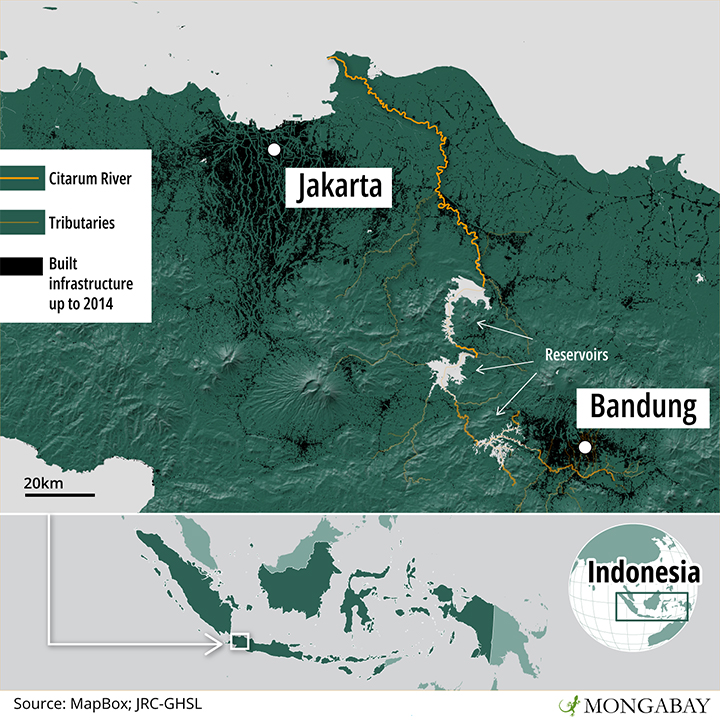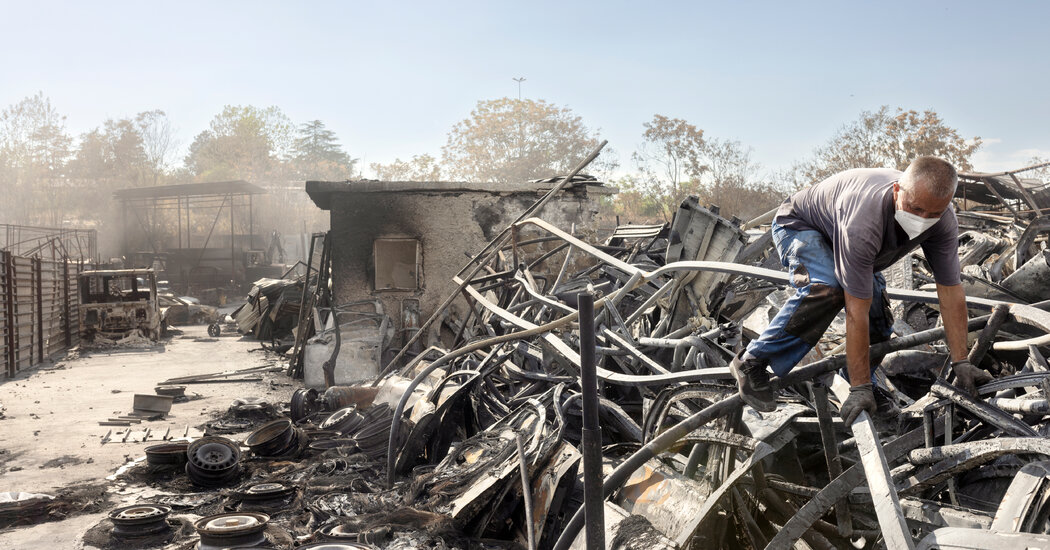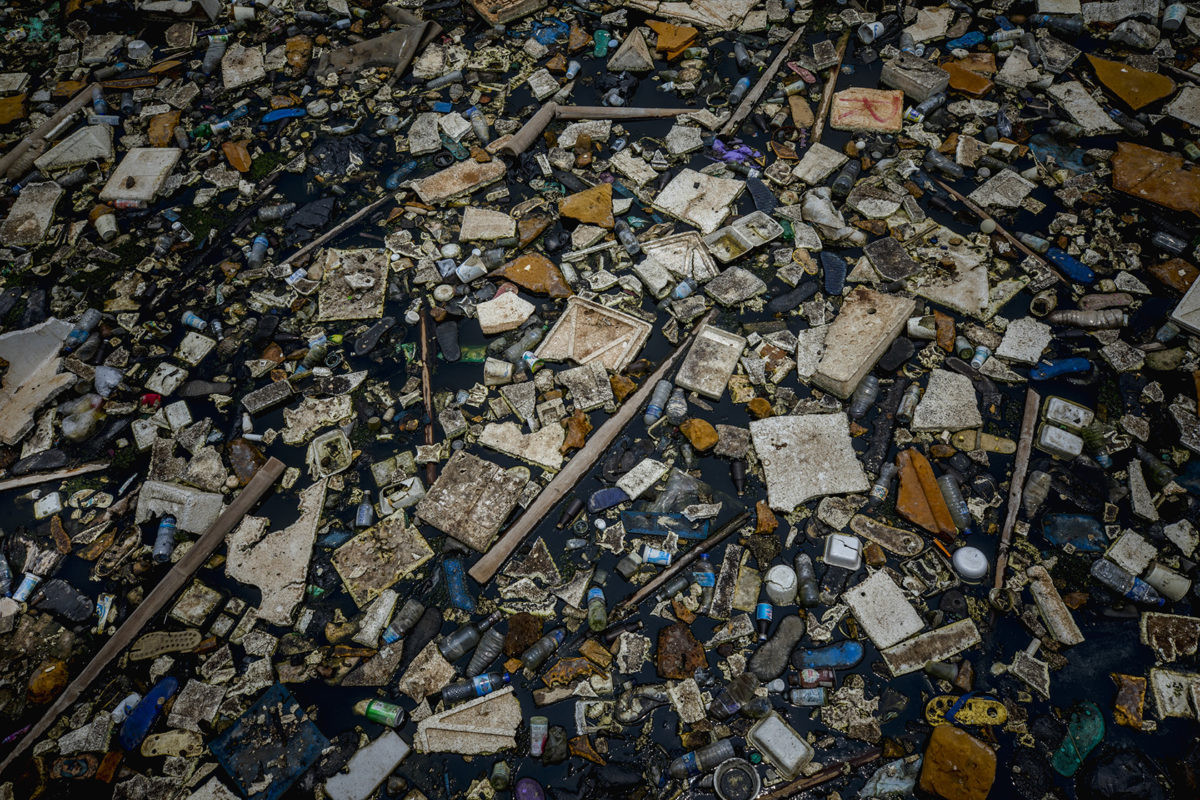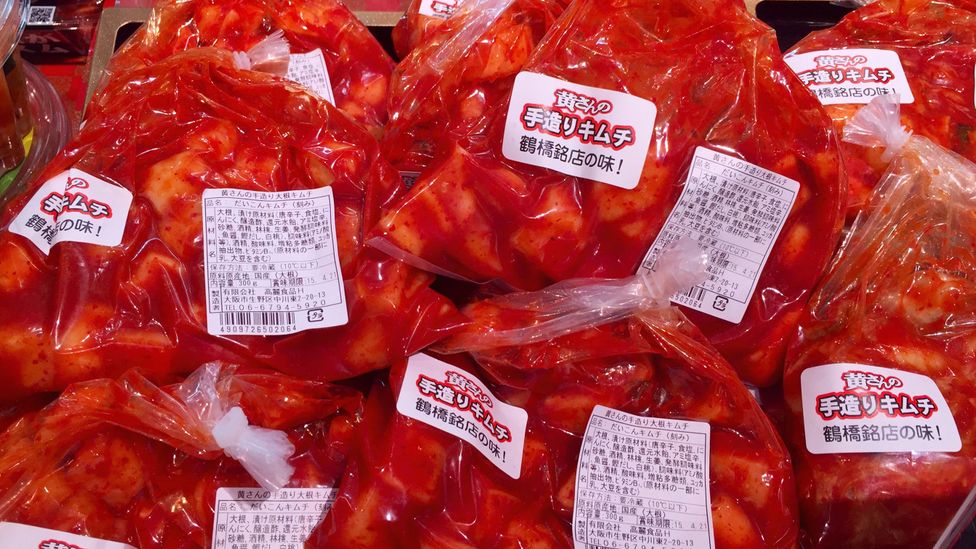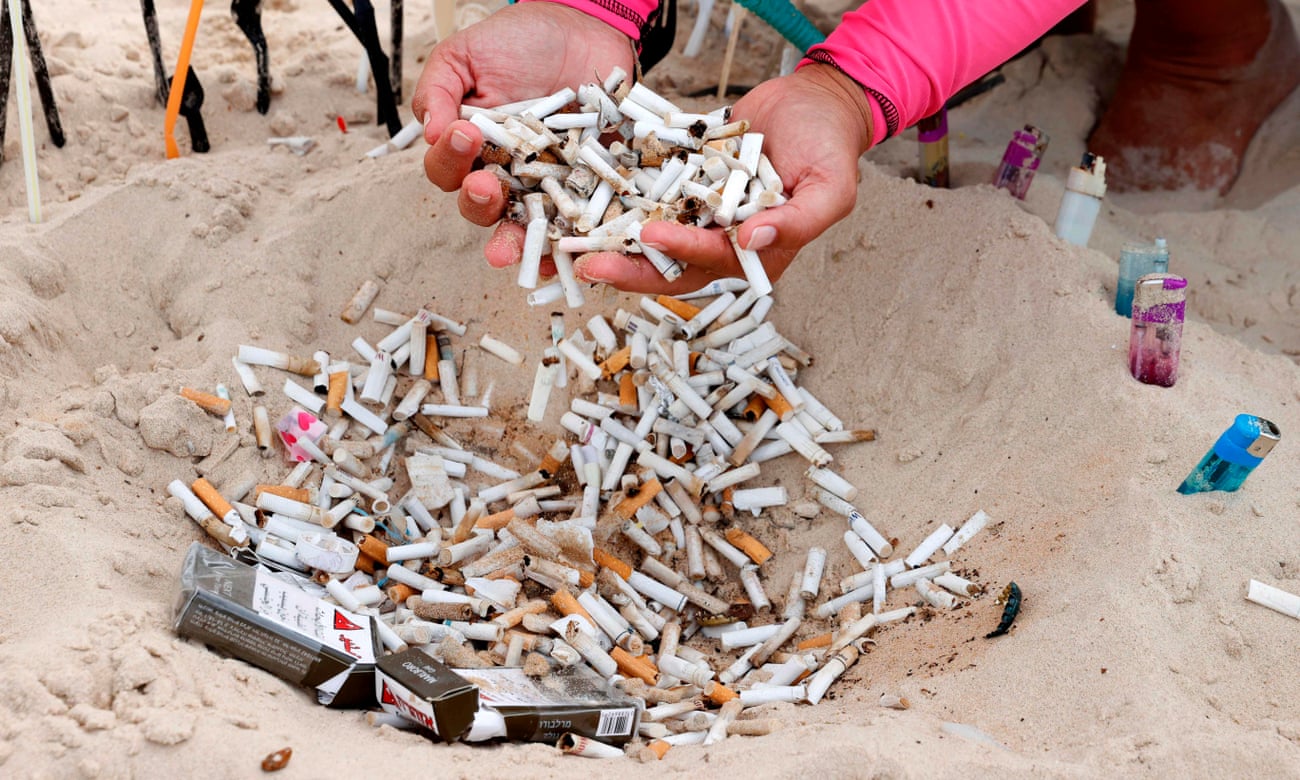A national program to transform Java’s Citarum River into a source of drinking water expires in 2025.A reforestation program in uplands near the source of the river is drawing on community volunteers.West Java Governor Ridwan Kamil tells Mongabay that residents will see improved water quality by 2025 and that there is political will to tackle the crisis. BANDUNG, Indonesia — In a valley downstream from the source of the Citarum River, retired army general Doni Monardo approaches a magnolia tree planted in 2018 by President Joko Widodo to mark the start of one of the world’s most ambitious river cleanup operations.
“The tree planted by the president is growing nicely,” Doni said, as heavy fog lurked over the high ground.
A community nursery here in Kertasari subdistrict has been hard at work planting 47 different species of tree seedlings to help resuscitate a landscape that has fallen into grave condition.
The source of the Citarum River is found beneath the foothills of Mount Wayang in Indonesia’s West Java province. Around 11,000 families grow vegetables in these uplands for a few dollars a day, with much of the produce trucked down the valley to feed around 7 million people living in and around Bandung, the province’s largest city.
Further downstream, three hydroelectric dams, some fishing grounds and countless irrigation sources help provide basic needs for the 50 million residents of Indonesia’s most populous province.
But the Citarum River, which at almost 300 kilometers (190 miles) from source to mouth is West Java’s longest river, is considered one of the world’s most polluted water courses. Vast structures of plastic waste and toxic chemicals have for decades choked what used to be a safe source of drinking water.
The Citarum flows through a densely populated area in Bandung. The city of 2.7 million people is the biggest culprit in the river’s pollution, according to the Citarum task force, but pollution sources are manifold. Image by Donny Iqbal/Mongabay.
Concern over the Citarum is nothing new. Reforestation was identified as a key upriver measure for Prokasih, an early government cleanup program dating back to 1989. In 2005, the Asian Development Bank provisionally approved a $500 million, 15-year plan to rehabilitate the Citarum. It called for scores of individual interventions, spanning community empowerment to data collection, but much of the groundwork wasn’t completed.
In 2018, President Widodo initiated Citarum Harum (“Fragrant Citarum”), a fresh rehabilitation program to transform the troubled river into a source of potable water by 2025. As part of the scheme, the president ordered more than 7,000 soldiers to remove garbage clogging the waterway.
Forestry scientists report that Indonesia’s government is increasingly relying on community groups like the nursery here run by 36-year-old Yusuf Efendi to meet ambitious tree-planting targets.
“Without community involvement and behavioral changes, how can this kind of ambition be realized?” Doni said before leaving the nursery.
Retired army general Doni Manardo visited Kertasari in March as part of his efforts to ensure the Citarum cleanup program runs smoothly. Image by Donny Iqbal/Mongabay.
Some sections of the Citarum are inundated with garbage, such as this location in Baleendah subdistrict south of Bandung proper. Image by Donny Iqbal/Mongabay.
Yusuf told Mongabay that drainage capacity at higher ground has been stretched owing to land clearing by farmers, itself a product of unclear zoning.
“Planting here has been difficult,” he said. “Not so much because the weather is a factor, but because of the human factor.”
Troubled water
Further downriver from Yusuf’s tree-planting sites, evidence of pollution and other impacts remain all too apparent.
Children no longer learn to swim in the river. Water testing has previously detected fecal coliform bacteria at levels 5,000 times the safe limit. In Ciwalengke, an area on the outskirts of Bandung, local people still see effluents from textile and garment factories flowing into tributaries. Water samples collected by Indonesia’s environment ministry have found heavy metals such as mercury, among other dangerous contaminants. And the decline in fish stocks has deprived fishers of an income and households of a key source of protein.
“The average fish catch can be up to 5 kilograms [11 pounds] a day,” said Kuswara, a local fisherman who spends much of his day wrestling with wide nets by the Batujajar Bridge in western Bandung.
Kuswara uses a net to catch fish on the Citarum in Batujajar. Image by Donny Iqbal/Mongabay.
A woman bathes her younger sister with water from a reservoir that fed by a river contaminated with household waste in Ciwalengke village. Image by Donny Iqbal/Mongabay.
But catch volume depends on water quality, and sometimes the 60-year-old returns home empty-handed. Various fish species are increasingly hard to find for fishers like Kuswara, who makes around 15,000 rupiah per kilo of fish, or about 46 U.S. cents per pound. Fish farmers in the Saguling and Cirata reservoirs often report losses from suspected metal contamination, presumed to originate from waste pipes concealed by factories.
Ramalis Sobandi, a researcher with the Bandung-based Tunas Nusa Foundation, said fieldwork in this section of the river has found elevated levels of child stunting. Children deprived of adequate nutrition in their early years run a higher risks of developing chronic conditions, such as diabetes and heart disease.
“In the rainy season [the river] is contaminated with wastewater and heavy metals,” Ramalis said. “There’s residue from fertilizer, from factories, and from households.”
A 2016 report by Greenpeace found almost 1,000 hectares (2,500 acres) of rice fields were contaminated by heavy metals.
Farmers tend to vegetable crops in Kertasari. Nearly half of the 11,000 families in the upper Citarum area are landless agricultural laborers. Image by Donny Iqbal/Mongabay.
Household waste is another major source of toxicity in the river. Around 200,000 families living in the Citarum watershed are estimated to dump their wastewater directly into the river. Anecdotal reports of septic tanks being flushed out into the river are common.
Flood risks
For Riki Waskito, the risks flowing down the Citarum through Majalaya subdistrict can be more immediate. On an afternoon toward the end of the rainy season, Riki observed fast-shifting weather patterns.
“Weather: rain; location: Cibereum-Kertasari; heavy intensity, duration 5-10 minutes; source: eyewitness,” he wrote to his network in the Siaga Warga WhatsApp group.
Riki, 45, has watched flash floods lay waste to property in this area of Bandung for decades.
“Flooding is a constant problem in the area where we live,” he said. “We have to adapt.”
The community group Riki belongs to draws on data published by an array of government bodies — the meteorology agency, the Bandung Institute of Technology’s climate lab, even the national aeronautics agency — to help communicate risks to local populations.
Residents paddle a boat down a flooded street in Bojongasih village. Image by Donny Iqbal/Mongabay.
Riki Waskito uses his phone to monitor water levels on a tributary of the Citarum in Majalaya subdistrict. Image by Donny Iqbal/Mongabay.
Estimates vary, but the amount of solid household waste generated in the city of Bandung is said to be around 1,500-1,600 tons per day. Only around two-thirds of this is subject to any waste-management processing, with the remainder dumped into the river.
In total, the government estimates that 1,500 tons of solid waste enter the Citarum River every day.
Other innovative community groups have coalesced to plug the large gaps in waste processing left by local governments. Sungai Watch, an NGO established in 2020 by three French siblings, has recruited around 1,000 young volunteers to install 100 trash-collecting barriers at various points of the Citarum.
“The key is to build responsible waste management,” said M. Bijaksana Junerosano, director of the NGO Waste4Change.
A backhoe grapples with garbage in the Cikapundung River, a tributary of the Citarum. Image by Donny Iqbal/Mongabay.
Bijaksana said no country could realistically solve the issue of waste in less than 10 years.
“Actually, this waste problem is not a technology problem,” he said. “The formula already exists — the question is more about being brave and whether or not to seriously apply the formula. This is more about leadership and political will.”
Taken to task
Shandy heads the command center for the West Java government’s Citarum task force’s command center. He spends his days watching a mosaic of screens displaying indicators pouring in from sections of the river where Yusuf, Riki, Bijaksana and thousands of volunteers are working to breathe life back into the Citarum.
“The basic concept is to accelerate,” Harum said in an interview in March. “The most important thing is to make decisions.”
Shandy monitors Citarum data on a row of computer screens at the task force command center in Bandung. Image by Donny Iqbal/Mongabay.
The Citarum flows through Bojongsoang subdistrict in southern Bandung. Image by Donny Iqbal/Mongabay.
Civil servants in khaki shirts monitor water-quality indicators sent in from 15 detection sites, which they use to assess progress on the 13 initiatives mandated by the Citarum Harum program. These plans are set for completion in 2025, when the seven-year cycle of the president’s 2018 commitment expires. What happens next remains unclear.
Funding from the state budget to clean up the Citarum was cut from the original allocation in 2020 and 2021.
“If the environment is already damaged as in this case it’s very hard,” said Prima Mayaningtyas, the head of the West Java environmental office. “Not to mention the amount of funding that is required, which is vast.”
As climate change leads to increasingly frequent bouts of extreme weather, scientists say rivers will face greater risks of reduced flow during periods of drought and uncontrolled torrents during rainy seasons.
Dony Manardo observes a magnolia tree planted by President Widodo in 2018 to mark the start of the Citarum Harum program. Image by Donny Iqbal/Mongabay.
A man picks through trash on the banks of the Citarum in Rancamanyar, south of Bandung city. Image by Donny Iqbal/Mongabay.
A tributary of the Citarum flows through a residential area in the Gedebage neighborhood of Bandung city. The conversion of agricultural land has continued apace in Java, the world’s most densely populated island. Image by Donny Iqbal/Mongabay.
Shandy, left, at the command center in Bandung. Image by Donny Iqbal/Mongabay.
The Citarum’s upstream watershed is seen from the air in Kertasari. Image by Donni Iqbal/Mongabay.
Children play amid garbage in the Citarum in 2017. During the rainy season much of the trash is washed away as the flow of water from upstream increases, but the risk of flooding grows as well. Image by Donny Iqbal/Mongabay.
Locals welcome West Java Governor Ridwan Kamil (seated on the left in the front boat) on the banks of the Cisangkuy Floodway last November. Image by Donny Iqbal/Mongabay.
The Cikapundung River, a tributary of the Citarum flows through Bandung, Indonesia’s fourth-most populous city. Image by Donny Iqbal/Mongabay.
The 2018 executive fiat that established the Citarum Harum project made rehabilitation of the watershed the responsibility of the central government. In practice, the governor of West Java, Ridwan Kamil, shoulders much of the political responsibility for a project that is paramount to millions of the province’s 50 million population.
In an interview with Mongabay, the governor, who oversees the Citarum task force, said West Java residents will see improved water quality within two years as officials enforce industry compliance with waste standards.
“In addition, we are implementing communal livestock waste management, as well as tackling the behavior among people who often throw garbage and household waste directly into river bodies,” Ridwan said.
Governor Ridwan Kamil looks over the newly constructed Cisangkuy Floodway, meant to drain excess water during periods of high inundation, in Bojongkunci to the south of Bandung. Image by Donny Iqbal/Mongabay.
The governor said rehabilitation of West Java’s longest river had become a high political priority, adding that policymakers were applying greater focus more broadly on the impacts of climate change.
“In the early days the political will to improve environmental conditions was in the end eroded by political bargaining,” Ridwan said. “Especially [among] leaders who focused on economic growth and ignored sustainability.”
High in the hills of Mount Wayang, Yusuf was drenched with sweat as he inspected the growth of seedlings supplied by his grassroots organization. The group has supplied 3 million seedlings to the Citarum task force overseen by Governor Ridwan. Local residents were given the trees to plant for free, including 110,000 coffee seedlings.
“The concept is sincere,” Yusuf said. “The principle is that it is not how much is planted, but how much will grow.”
Banner image: Residents paddle a boat down a flooded street in Bojongasih village. Image by Donny Iqbal/Mongabay.
This story was reported by Mongabay’s Indonesia team and first published in a five-part series published here, here, here, here and here on our Indonesian site in June 2022.
Chemicals, Community Development, Community-based Conservation, Drinking Water, Ecosystem Restoration, Environment, Farming, Featured, Fish, Fishing, Flooding, Forestry, Forests, Governance, Land Use Change, Natural Resources, Nutrient Pollution, Poisoning, Politics, Pollution, Rainforests, Reforestation, Restoration, Rivers, Tropical Forests, Waste, Water Crisis, Water Pollution, Water Scarcity
PRINT

